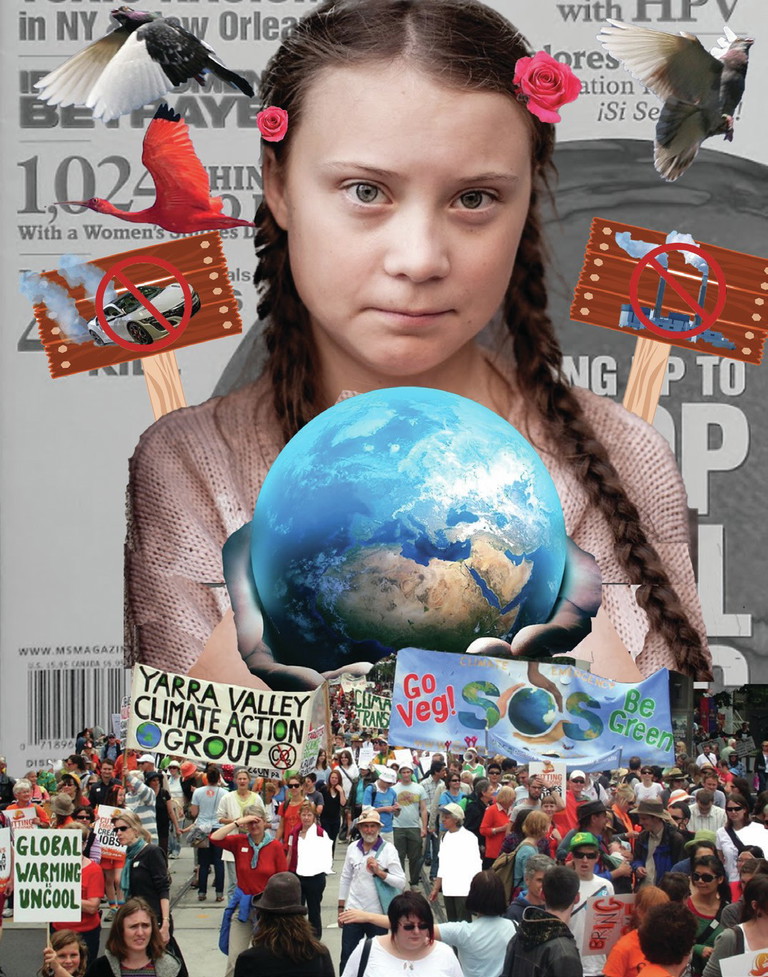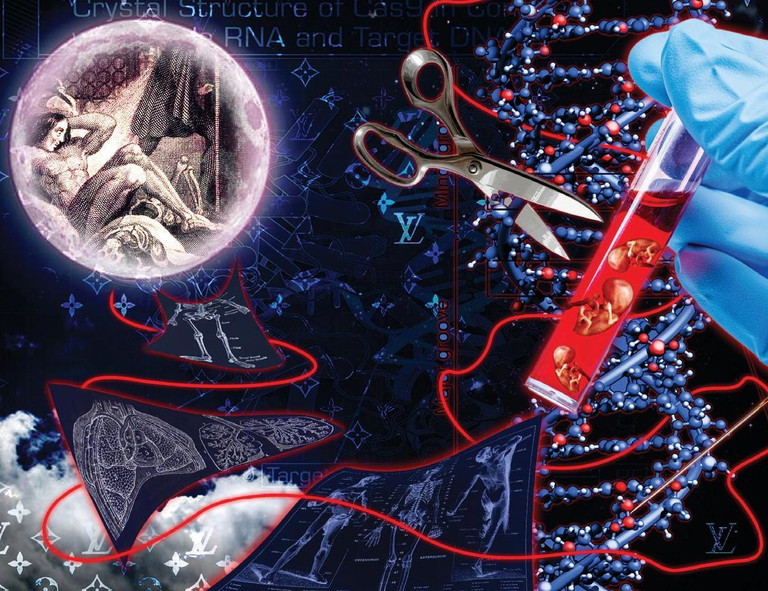HIGH SCHOOL

Jovan F., activism photomontage, grade twelve.
Courtney Casto
Activist art often elicits a knee-jerk response, and I’ve noticed that many art educators are understandably fearful of navigating controversial topics in their classrooms. Though today’s contentious educational climate can make these conversations difficult, I believe that asking young people what they think about tough subjects is more important today than ever before. Empowering students to interact with complicated social issues via the art-making process can unlock their creative potential, increase their engagement, and help them connect with the world around them.
Why Digital Art Activism?
Artists have a long history of making art that promotes social change, and John Dewey even noted the important correlation between education and civic participation all the way back in 1916. Contemporary artists—and students in general—must be well-versed in digital visual literacy to thrive in today’s rapidly evolving technological society. Digital art provides the perfect platform for raising awareness about important causes because many people already have access to the tools necessary to create and share it. The combination of activism, education, and digital art ser ves our students in a timeless yet contemporary manner.

Rowan C., The Modern Prometheus, grade twelve.
Lesson Overview
In this lesson, students will select and research a social, ecological, economic, religious, or political issue that interests them. They will use image-editing software to create a collage that raises awareness about their chosen cause.
I start this lesson by establishing ground rules around communication regarding sensitive topics and reinforcing that it’s always okay to disagree respectfully. I’ve taught various forms of this lesson for the last six years and have never had a heated argument unfold. I have, however, witnessed dozens of students offer incredibly insightful, passionate viewpoints and inspire true dialogue among their peers.
Brainstorming and Research
The preliminary brainstorming and research phase is key to unlocking creative potential and student engagement in this project. Start with a whole-group brainstorming activity and instruct students to create a master list of current events and global issues. Then ask students to choose two or three topics that resonate with them and conduct an online search to gather information. This information will provide inspiration for ideas and imagery to incorporate into studentsʼ work.
Preview Mode - Subscribe to unlock full content


SchoolArts Magazine
Inspiring Creativity Since 1901
A national art education magazine committed to promoting excellence, advocacy, and professional support for educators in the visual arts.
Categories
Explore our inspiring content by topic